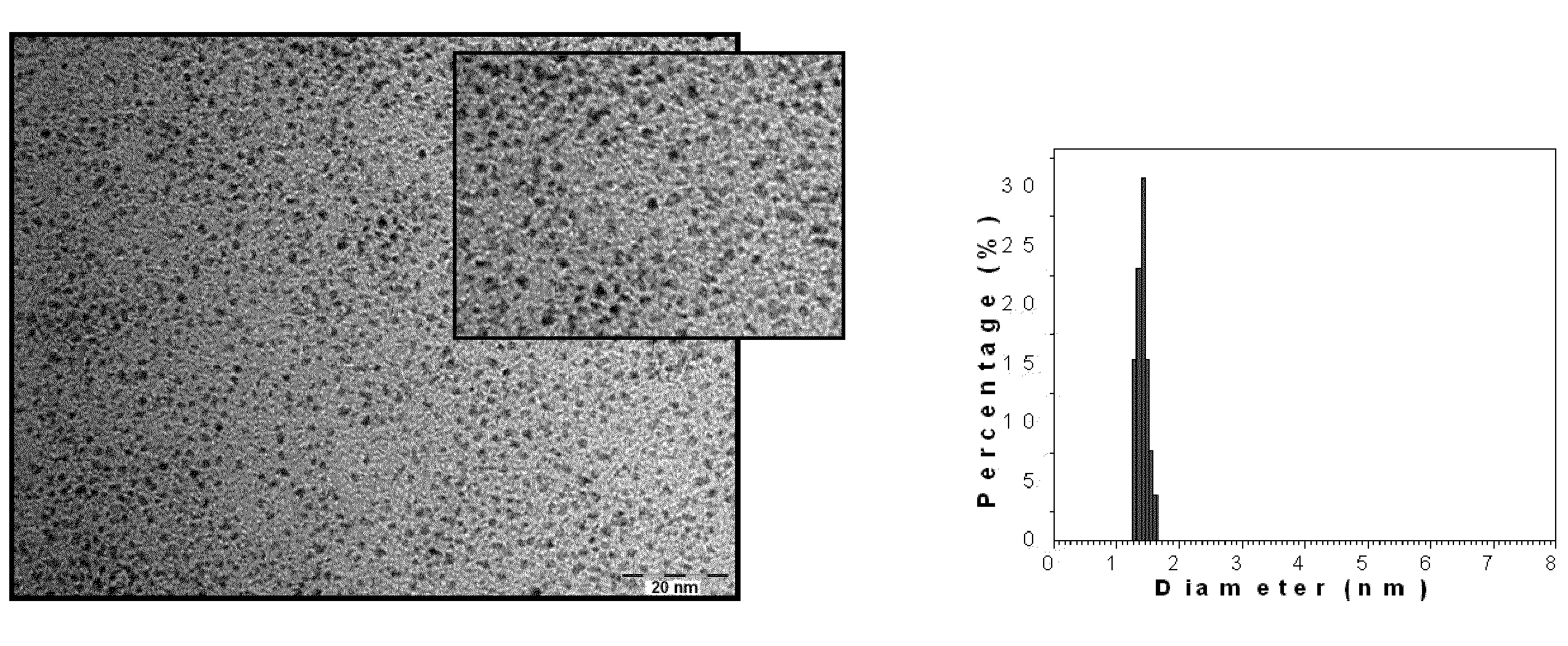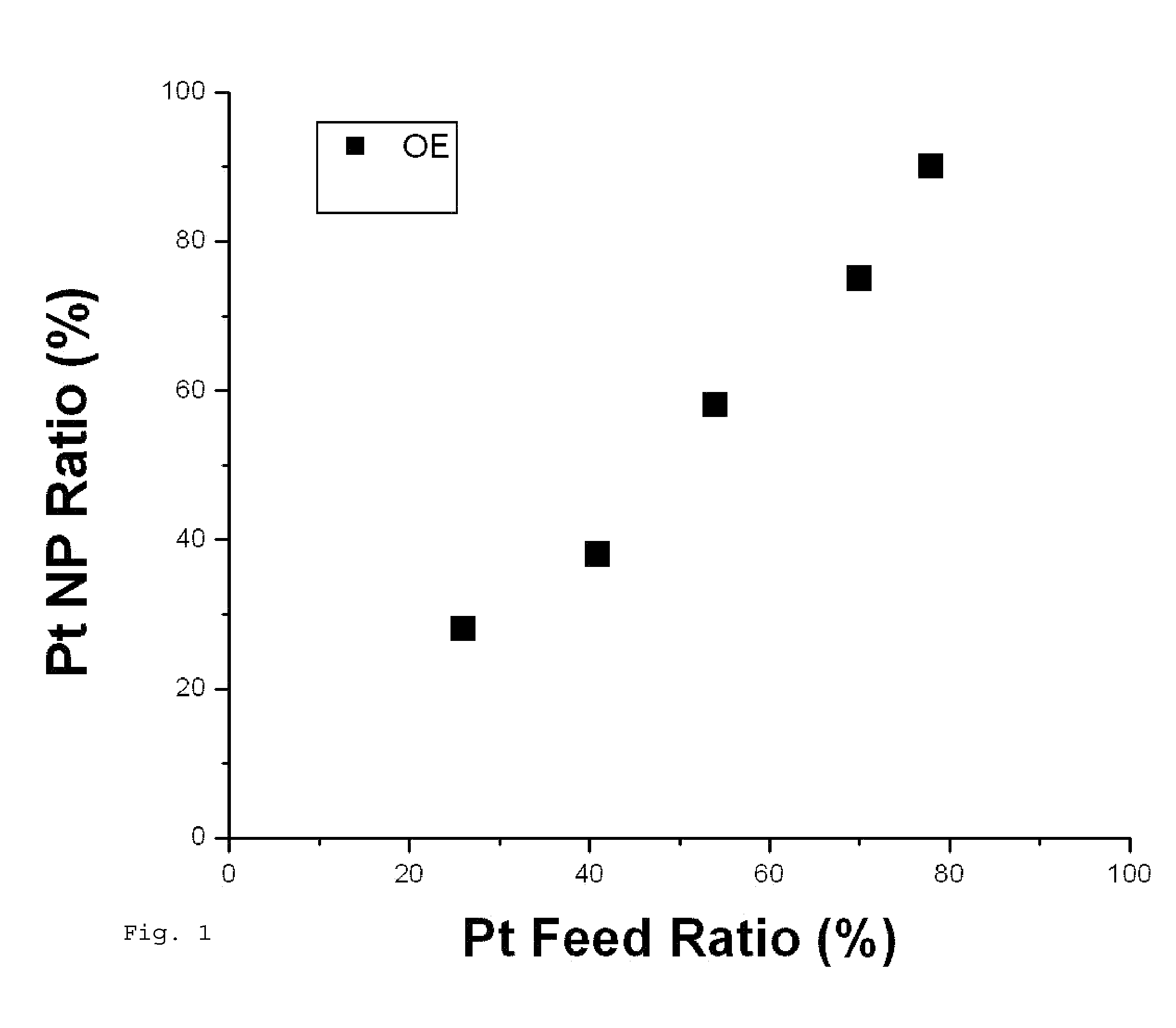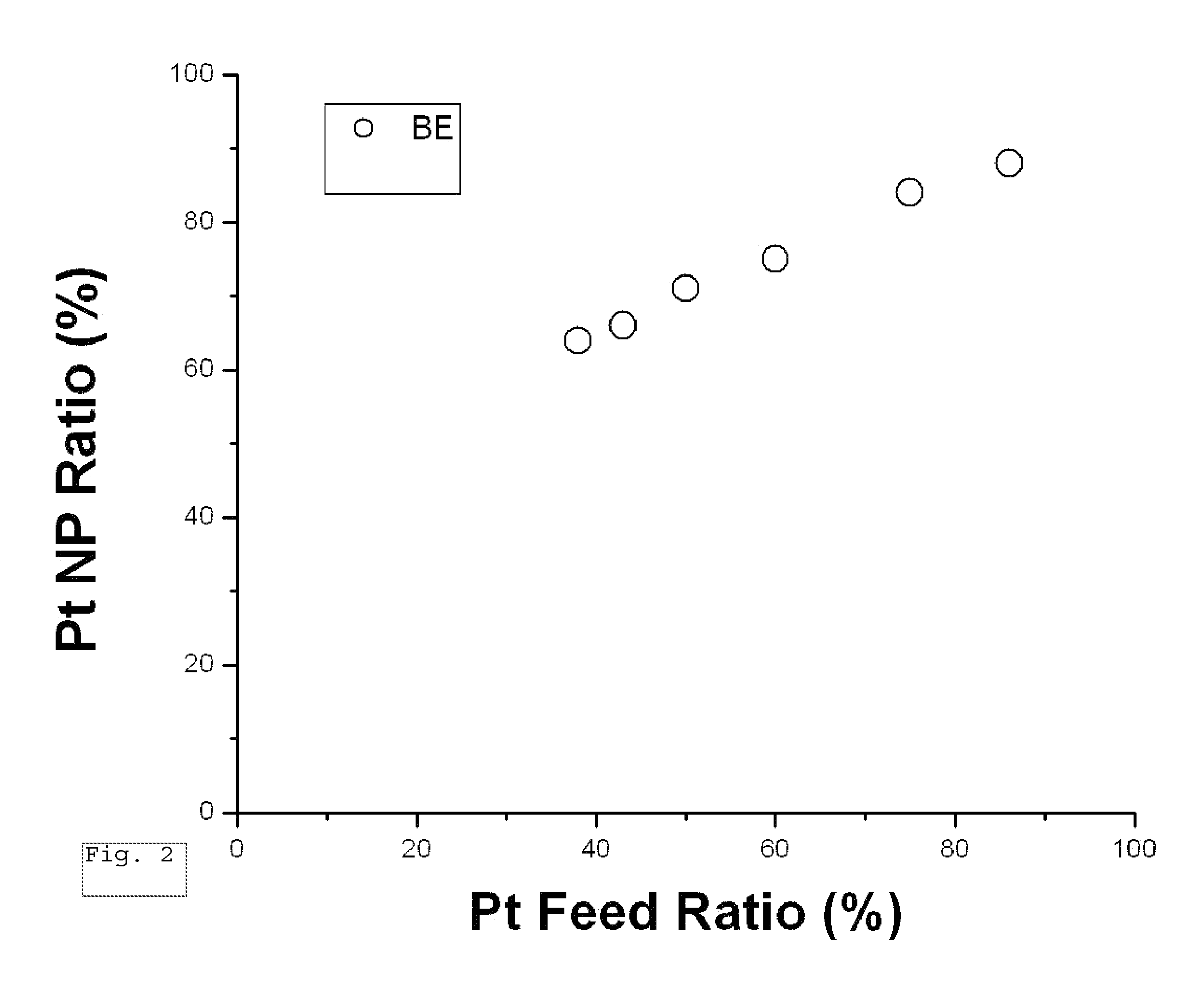Synthesis of PtCo Nanoparticles
- Summary
- Abstract
- Description
- Claims
- Application Information
AI Technical Summary
Benefits of technology
Problems solved by technology
Method used
Image
Examples
example 1
Synthesis of 2-nm Pt75Co25
[0047]To a 250 ml 3-neck flask containing 60 mL octyl ether (99%) were added 543 mg 1,2-hexadecanediol (1.89 mmol) and 275 mg platinum acetylacetonate Pt(acac)2 (0.68 mmol) while stirring. The solution was purged with nitrogen and heated to 105° C. The solution appeared dark green color. A separate solution containing 103 mg CO2(CO)8 (0.30 mmol) dissolved in 3 mL octyl ether was prepared.
[0048]At this 105° C. temperature and under nitrogen atmosphere, 0.5 mL oleylamine (1.06 mmol), 0.5 mL oleic acid (1.56 mmol), and the solution containing CO2(CO)8 prepared above were added to the heated solution. Nitrogen purging was stopped and the solution was kept under nitrogen. The mixture was heated to 270° C., and kept at 270° C. for 30 minutes. The solution turned black in color.
[0049]After the reaction mixture was allowed to cool down to room temperature, the solution was transferred into a large flask under ambient environment. The black product was precipitated...
example 2
Synthesis of 5-nm Pt75CO25
[0052]In a 100 ml 3-neck flask containing 40 ml octyl ether, 600 mg platinum acetylacetonate (3.0 mmol), 0.2 ml oleylamine (0.5 mmol) and 0.16 ml oleic acid (0.5 mmol) were added into the octyl ether solution under stirring. The solution was purged with nitrogen and heated to 100° C. The solution appeared yellowish color.
[0053]At temperature and under nitrogen atmosphere, 171 mg CO2(CO)8 (0.5 mmol) were added into the octyl ether solution. The solution was kept under nitrogen. The mixture was heated to 270° C., and refluxed for 2 hours. The solution appeared black in color.
[0054]After the reaction mixture was allowed to cool down to room temperature, the solution was transferred into a large flask under ambient environment. The black product was precipitated by adding ethanol (about 200 ml). The complete precipitation was achieved either by overnight precipitation or by centrifugation. The yellow-brown supernatant was discarded. The black precipitate was d...
example 3
Synthesis of 8-nm Pt75CO25
[0056]In a 100 ml 3-neck flask containing 20 ml oleylamine and 14 ml oleic acid, 600 mg platinum acetylacetonate (3.0 mmol) and 129 mg cobalt(II) acetylacetonate (0.25 mmol) were added into the above solution under stirring. The solution was purged with nitrogen and heated to 250° C. The solution appeared black in color.
[0057]After the reaction mixture was allowed to cool down to room temperature, the solution was transferred into a large flask under ambient environment. The black product was precipitated by adding ethanol (about 100 ml). The complete precipitation was achieved either by overnight precipitation or by centrifugation. The yellow-brown supernatant was discarded. The black precipitate was dispersed in hexane (about 10 ml) in the presence of oleic acid (about 0.1 ml) and oleylamine (about 0.1 ml) and precipitated out by adding ethanol (about 100 ml) and centrifuging. The product was re-dispersed in hexane (about 10 ml), centrifuged to remove an...
PUM
| Property | Measurement | Unit |
|---|---|---|
| Fraction | aaaaa | aaaaa |
| Fraction | aaaaa | aaaaa |
| Diameter | aaaaa | aaaaa |
Abstract
Description
Claims
Application Information
 Login to View More
Login to View More - R&D
- Intellectual Property
- Life Sciences
- Materials
- Tech Scout
- Unparalleled Data Quality
- Higher Quality Content
- 60% Fewer Hallucinations
Browse by: Latest US Patents, China's latest patents, Technical Efficacy Thesaurus, Application Domain, Technology Topic, Popular Technical Reports.
© 2025 PatSnap. All rights reserved.Legal|Privacy policy|Modern Slavery Act Transparency Statement|Sitemap|About US| Contact US: help@patsnap.com



